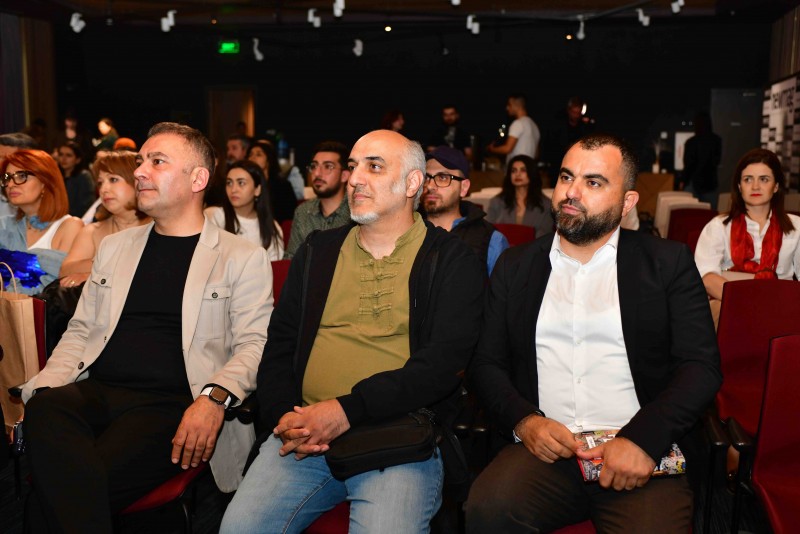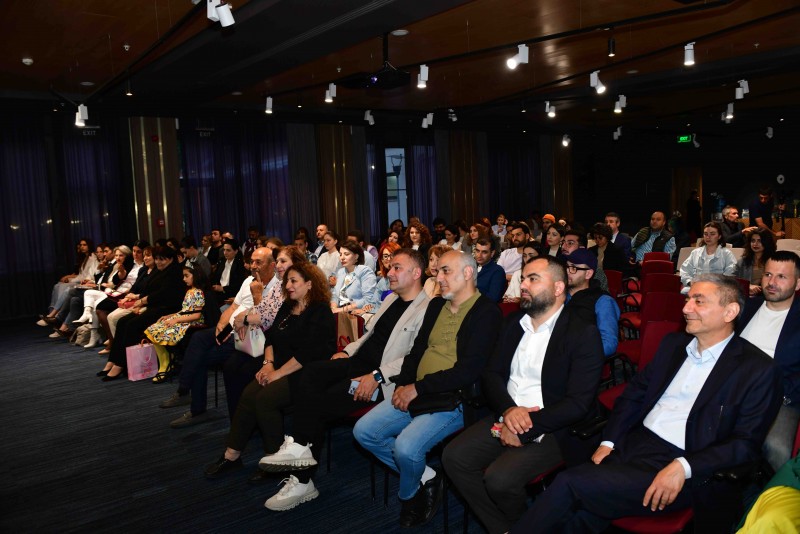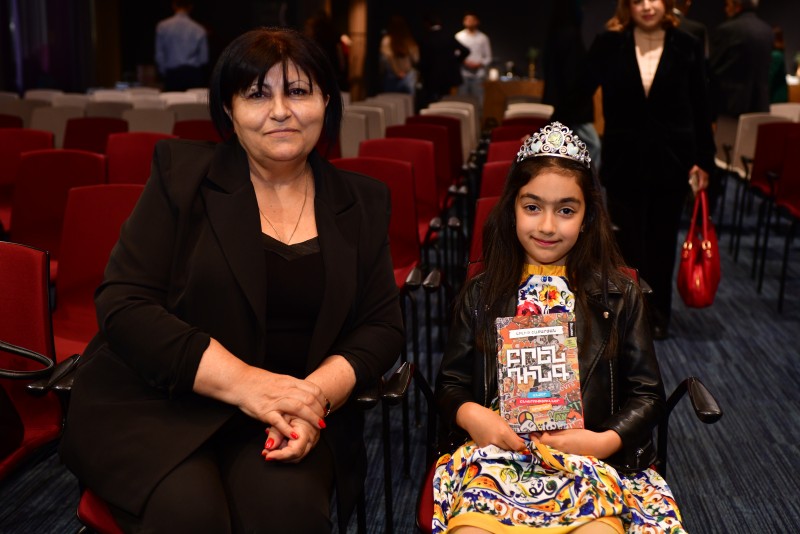Newmag presented "Branding: Persons, Companies, Countries" by Lilit Shakaryan (photos)

The presentation took place at the Congress Hotel. Leading specialists, professors and students in the field were present. This is Lilit Shakaryan's third book. In "Branding: Individuals, Companies, Countries" the author describes the theoretical and prac




At the presentation, Gnel Nalbandyan, the editor-in-chief of Newmag, shared his interesting experience while talking about the importance of country branding. "Once I was in a club in Prague. It was in the 90s. Italian neo-fascists entered, immediately spotting me as a foreigner. Their curiosity led them to inquire about my origin. Upon hearing "Armenia," they initially mistook it for "Romania," then promptly associated it with communism. This recollection struck me profoundly as I delved into editing the book's chapter on country branding. It underscored the challenge of crafting a brand that is not only internationally recognizable and appealing to tourists but also resonates positively with locals, ensuring their comfort and prosperity."




Gnel Nalbandian said that the book contains information about Charles Aznavour, how a person can be branded and represent an entire nation, country and civilization, and how it can be achieved at the level of a person, structures, companies and states. "You will find the answers to this question in the book, which presents the author's personal experiences and international best practices." Artak Aleksanyan, the CEO of Newmag mentioned that they usually do not publish textbooks because that is not the profile of Newmag, but they publish books that professors will guarantee to students for optional or auxiliary literature, and Lilit's book belongs to that series. "This is a book that will help students gain comprehensive knowledge about branding."




According to Artak Aleksanyan, the idea of branding arose when the number of companies increased. The abundance of companies forced marketers to create a service that would differentiate companies. "For example, personality branding arose from the unhealthy ambitions of social networks, when people wanted to stand out from others at any cost. Branding is very important, but as the author points out, there must be quality under it, branding does not mean beautifully packaged deception, which is unfortunately present in our and the world market today. I hope this book will also give consumers and industry professionals a clearer understanding of how they present themselves and what they promise."




In the book, the author gives examples of Armenian companies that have managed to become national and international brands. The represented companies are Ameriabank, Yerevan Brandy Factory and "Gourme Dourme" chocolate house. Diran Baghdadyan, co-founder of Chocolate House, presented the history of their brand. "This is the story of a family that decided to return to their homeland in 2005, although we could have stayed in Europe. But because it was a family dream, we returned."


"But everyone said don't try to do business, it won't work, especially since our motto was that we had to create a quality product, quality packaging and good service. It was a challenge and we decided to do it without listening, and when we started producing chocolate in the area of 70 square meters, many people laughed again, saying that we would close very soon. Passion is a big factor in making a brand successful. We worked to make our slogan go forward, we chose creative packaging, but there had to be very high-quality chocolate behind it. As Mr. Aleksanyan mentioned, you can't pack it well but put a low-quality product in it. 50 percent should be the good chocolate, 50 percent should be a good look, the visual."


The businessman highlighted a common misconception prevalent among locals— the notion that branded goods must originate from abroad. He emphasized the international renown of Armenian products like "Ararat" brandy, showcasing the potential for homegrown brands to excel globally. He stressed the importance of fostering additional high-quality brands within Armenia to further elevate its presence in the global market.


After the presentation, there was a panel discussion, where the speakers presented the essence of the brand idea in more detail. Stepan Azaryan, the founder and creative director of Backbone Branding Company noted that from narrow specialists to politicians, every word, every step, deed, our attitude towards the tourist is directly proportional to the development of the country, to the branding of our country.




Associate Professor Yeranuhi Manukyan, at the helm of the YSU Science Policy Department, offers her perspective, viewing her role as a YSU lecturer as her personal brand. She stresses the importance of individuals aligning presentation with substance, advocating for a seamless fusion rather than a discordant clash. Often, aspirations diverge from reality, leaving the creator disconnected from the essence of their brand. Lilit Shakaryan distinguishes herself not only as a brand but also as an author delving into branding intricacies. Manukyan underscores the importance of effective self-presentation beyond mere intelligence, highlighting Armenia's untapped potential while cautioning against equating heroes with anti-heroes and brands with anti-brands in today's landscape.


Eva Sargsyan, Art Director at Indigo branding company, underscores the fundamental role of individual preferences and company ethos in shaping a brand, encompassing everything from personal tastes to visual elements like colors, logos, and fonts. Regarding country branding, she emphasizes the pivotal role of economics and journalism. She highlights the significance of how journalists and social media portray a country, as well as the impressions foreigners form when researching Armenia online. For Sargsyan, effective country branding is not only essential for boosting tourism but also for attracting fresh talent to contribute to its development.


Artur Atanesyan, Professor from the YSU Sociology Department, presented why the brand is a new field for us. "Why do we view branding as a novelty, perceiving it somewhat artificially? It could stem from a hint of national arrogance, adhering to the principle of promoting what is already deemed excellent. Moreover, we encounter challenges at the state level, particularly in crafting compelling names and slogans. What, precisely, constitutes an Armenian brand? Specialists from our allied nations often assert that Armenia possesses a rich agricultural heritage, renowned for its succulent fruits like apricots, peaches, and pomegranates. Yet, what identity and symbolism have we chosen to represent our nation? Even the term "Armenia" incorporates the suffix "stan," a Turkish root."


Who are we and what is our brand? Having been abroad many times and teaching, he first instructs the students to Google Armenia. It mainly brings up negative events like Genocide and the Karabakh conflict. If you do it on a visual level, it brings sad, historical pictures. "Undoubtedly, I hold the objective view that we shape our brand based on our perceptions, consequently molding our reality accordingly. This inherent tendency poses a significant challenge, underscoring the paramount importance of branding in our lives."


Lilit Shakaryan's "Branding: Persons, Companies, Countries" is already available in bookstores and on the newmag.am website.













Read also

A Closed Community of Independent Thinkers: Newmag Launches Signature Club (Video)

Newmag Publishing Presents Two New Books on Armenia TV’s “Good Morning” Program (Video)

Paul Ignatius, the highest-ranking Armenian-American public official in US history, passes away at 104

Bonjour, Littérature! The third Francofest International Book Festival was held (photos)


